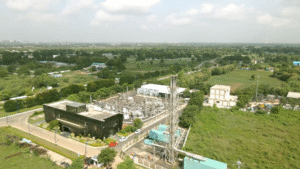Mumbai (Harshit Yadav): Japan’s alcohol consumption has steadily declined over recent decades. The decrease is especially notable in sake consumption.End-of-year parties (bōnenkai) and New Year family gatherings were once times for drinking, but habits have changed. Japan has seen a reduction in its domestic alcohol market owing to population decline and changes in lifestyle. Per capita drinking in 2022 amounted to 75.4 liters, a decrease of 25% in comparison to the highest record of 101.8 liters in 1992.
Tokyo’s per capita alcohol consumption exceeded 100 liters in 2022, at 102.9 liters. This higher number reflects Tokyo’s large restaurant and bar scene. Workers often drink before going home, raising the average. Other Tokyo metropolitan prefectures had lower averages: Kanagawa at 66.2 liters, Saitama at 64.9 liters, and Chiba at 63.7 liters.
Other prefectures with high consumption included Toyama at 96.6 liters, Aomori at 94.1 liters, and Kōchi at 91.9 liters. Akita’s consumption was 91.1 liters. The lowest consumption was in Shiga, with just 55.4 liters per capita.
In 1994, beer sales in Japan reached a peak with 7.06 million kiloliters sold. Nevertheless, in 2021, it continued to fall and was then below 1970 volumes to a mere 2.10 million kiloliters. No matter the drop in beer sales, there was always an increase in beer-flavored options like happōshu and third-beer beverages that balanced it.
Even though the Japanese people have changed beer, their love for it is not entirely gone, and the most popular beverage in the country becomes its modern alternatives.
Japan has also experienced a sudden drop in consumption of sake. Notwithstanding the fact that sake has been causing global interest, its domestic consumption has been diminishing. In 2022, sake consumption was 422,000 kiloliters, which is about a third of the 1970 level of 1.57 million kiloliters.
The fact that the decline in sake came quite unexpectedly as it becomes more and more well-known in the world. Not long ago, UNESCO registered the traditional knowledge of making sake as part of the list of intangible cultural heritage. Strangely, the country’s consumption is still down.
Such sobriety is a result of an ongoing population shift and the gradual replacement of traditional drinking customs in Japan. Decreasing alcohol consumption is the consequence of broader tendencies, which include the aging and withering of the population due to healthier behavior.
Although beer and sake consumption have decreased, drinks with alcohol flavor still have the highest position on the consumers’ preferences. The prognostication of the future by the consumers is more of creativity and adjustment to the evolving customer tastes.
The tendency of the decrease in the Japanese alcohol market is one of the clear signs that the city, as the place of the most significant societal change, is undergoing the process of change in society. The recent consumer trend for easily accessible and low-calorie drinks points to a turn to healthier habits.









